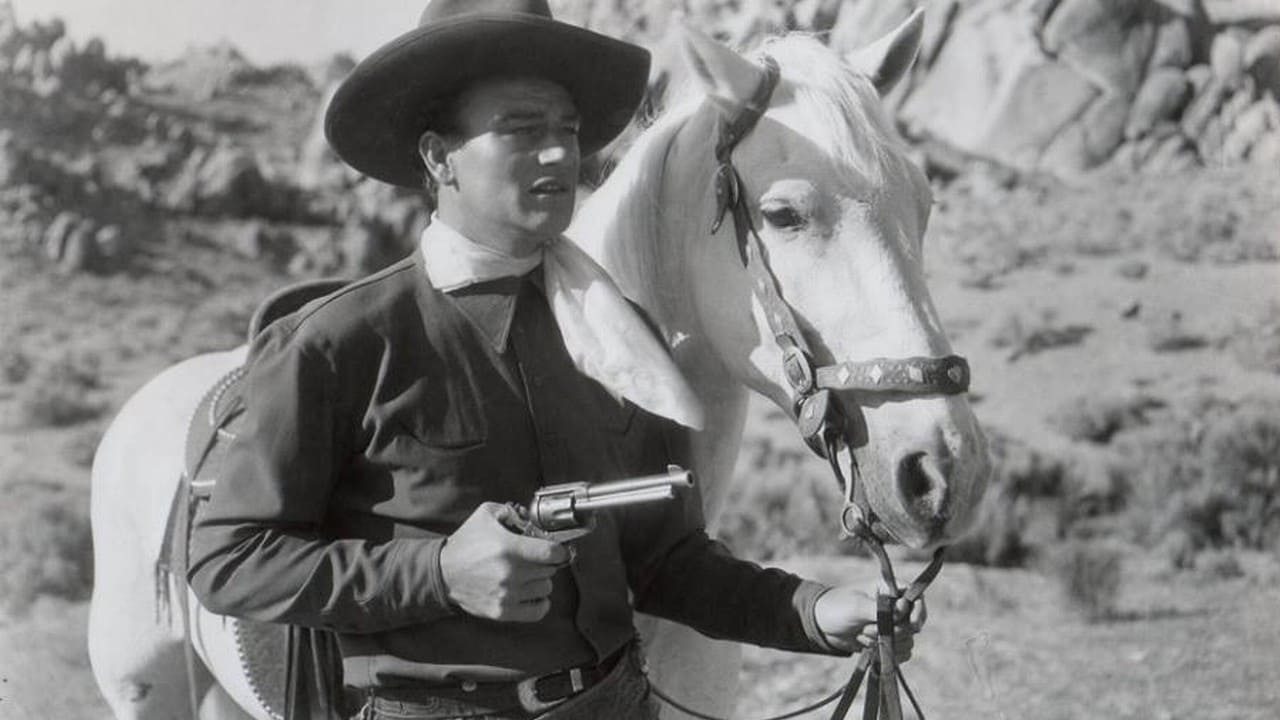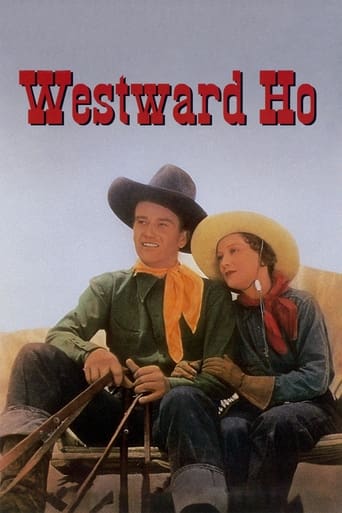Limerculer
A waste of 90 minutes of my life
Odelecol
Pretty good movie overall. First half was nothing special but it got better as it went along.
Sameer Callahan
It really made me laugh, but for some moments I was tearing up because I could relate so much.
JohnHowardReid
SYNOPSIS: Loner organizes a vigilante group to hunt for his younger brother who was kidnapped by outlaws twelve years previously. NOTES: Dedicated to the Vigilantes... builders of the New Empire of the West... stern frontiersmen of the days of '49. Men who gave their lives to purge the new frontier of lawlessness. Republic's first film. Negative cost: a mere $37,000. However, that is largesse indeed compared to the sixteen Lone Star westerns, which were brought in at no more than $11,000 a-piece. More than three times the Lone Star budget here, and all that extra money is right up there on the screen.COMMENT: Despite some oddities (Wayne serenading the heroine with a dubbed basso profundo) and technical shortcomings (jerky continuity, tacky indoor sets, primitive sound recording), this is not only one of the best of Wayne's pre-superstar westerns, but a worthwhile addition to any permanent collection in its own right. The locations are truly breathtaking. Bradbury is a director (and Stout a photographer) who knows how to get both the dramatic and pictorial best out of them. The movie is full of sweeping images (the outlaw band, lined up across the frame, silhouetted vividly against sky and sand; the black-shirted singing riders, all mounted on white horses, encircling the renegades on a boulder-strewn mountainside) and no expense has been spared in staging the many action highlights, with lots of thrilling stuntwork, falls and running inserts. This is not a movie that saves all its action for the final reel either. In fact, if one has any complaint against the film, it's so full of action, there's little chance for the heroine. Never mind, Wayne acquits himself nobly, and there's an excellent performance from Frank McGlynn Jr as the outlaw brother. The villains, led by Curtis and Canutt are appropriately nasty. One critic has complained recently that the action scenes are undermined by the lack of background music. I didn't find this a problem. There is music in the film - under montages - plus no less than three songs (including the title number which is rendered no less than three times).By the humble standards of the "B" western, production values are outstanding.
tomwal
A debut western for John Wayne , enhanced by Olive films in 2012 with a new digital transfer. Lensed by Archie Stout on location, this western tells the story of two brothers, Wayne and Frank McGynne. Their parents are killed . One brother Mcgynne is taken by outlaws and Wayne grows up hoping to avenge the death of his parents and locate his lost brother. He forms a vigilante group and the story proceeds from there.Never dull, there are good performances from all involved. Well worth a view and a ****** out of 10 star rating.
classicsoncall
When new Republic Pictures was formed in 1935, they brought over a lot of talent from Lone Star Productions, including producers Trem Carr and Paul Malvern, director Robert North Bradbury, and box office draw John Wayne. All were involved in "Westward Ho", their first picture featuring 'The Duke'. Curiously, whether by accident or design, John Wayne's character goes by the name of John Wyatt, the same name he had in "Paradise Canyon", the final release from Lone Star.You can notice the improved production values and generally better story quality with Republic, even if the picture offers one of your standard brothers separated during youth tales. In this case, John Wyatt's family is ambushed by cattle rustlers in an opening scene, and younger brother Jim is taken by the gang, who's leader Whit Ballard (Jack Curtis) considers him feisty. Jim grows up an outlaw, while John, with the passing of years, is determined to find and get revenge on the bad guys who killed his parents. The young Jim was played by Dickie Jones, who grew up playing a whole host of cowboy and sidekick roles, and was probably the best stunt rider I've ever seen while backing up Jock Mahoney's 'Range Rider' in the 1950's.Probably the most unique feature of "Westward Ho" has to do with the idea of identifying John Wyatt's band of Vigilantes decked out in black shirts, white scarves and all riding white horses. My first thought was where did they ever get all those white horses from. They're an impressive sight, particularly when all lined up and ready to confront the bad guys. I had to stop and consider also how the term 'Vigilantes' seemed to carry a positive connotation in this story, unlike the more accepted definition one is used to. These vigilantes operated right out in the open and under the umbrella of the law, and most of the time made it look just a little bit too easy capturing the bad guys.One scene that will jump right out at you is when John Wayne's character serenades Sheila Mannors, more than obviously dubbed in a much deeper voice than Wayne's. It's not the first time Wayne is shown performing a song, it happened way back in his very first Lone Star picture, "Riders of Destiny". In fact, his character in that one was 'Singin' Sandy Saunders. Wayne was dubbed by a small handful of extras on the set, but you have to take your pick by film, as the guys weren't credited back then. In this one, the most probable suspect would have been Jack Kirk, who's in the cast as an uncredited Singing Rider. Director Bradbury's son Bill was the voice in 'Riders', who used the money he earned to help put himself through medical school.Oh yes, and I can't forget to mention Yakima Canutt, a regular in John Wayne's pictures, sometimes as a sidekick and sometimes as a heavy. In this one, he's one of Ballard's henchmen simply named Red, and I believe it's the only time I've ever seen him with a mustache. Probably to underscore the passing of years from the movie's opening scene to a span of some seventeen years later. Canutt's polished stunt work is evident throughout the story, especially in the old rope across the trail trick that takes out four of the bad guy posse. I still wince whenever I see one of those stunts, never knowing if any of the horses (or men) ever came out of the scene with a permanent injury.Here's something curious - why was it that when Ballard's gang held up the bank, the ruckus didn't start until they started riding away with guns blazing? They didn't shoot things up while robbing the bank, so why draw attention for the getaway? Something to think about.Anyway, if you're a fan of John Wayne, this one's not bad, offering a somewhat more mature and solidly built looking actor, even if it's only a couple of years beyond his starring roles for Lone Star. The finale of course by now is pretty standard, Wayne gets to hook up with his female co-star, and with Republic, he even gets to kiss her to close out the story!
John (opsbooks)
Brother versus brother as the Duke leads a gang of white-horse-mounted vigilantes out to destroy every bad guy in the state. His parents murdered by a gang of cattle thieves, his brother taken and raised by the gang, John/the Duke sets out to locate the gang a decade after the event. Exciting action scenes which make up for stilted dialogue, especially from Mary MacLaren as John's Ma. As the row of good guys, black hats and black shirts on their white chargers, thunder across the screen, my thoughts hark back to the days of 17-inch black and white TV sets. In Australia this comes packaged on a cheap DVD with 'Flying Tigers' and 'Hell Town'. The DVD has excellent sound but generally below average picture quality!


